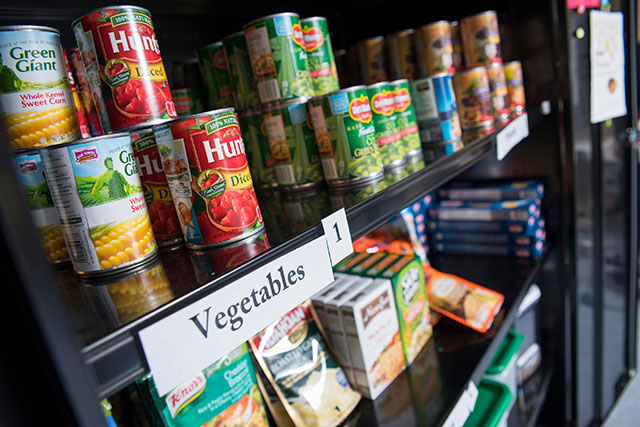
These findings, along with recommendations to ease access to aid programs, are shared in SNAP and the Federal Work Study Rule: Increasing College Student Success for Low-Income Students, a white paper recently published by recent HSU graduate Heather King (’15, Social Work), M.S.W., and HSU Social Work Professor Jen Maguire, M.S.W., Ph.D.
Students are automatically disqualified from the U.S. Department of Agriculture’s Supplemental Nutrition Assistance Program (SNAP) unless they meet one of a few exemptions, like having at least 20 hours of paid employment per week or participating in a work-study financial aid program. California’s Department of Health & Human Services interprets these requirements slightly differently, allowing students to qualify for work study—but not necessarily participate—and still meet the exemption to qualify for CalFresh, the state’s implementation of SNAP. Even then, it’s up to individual counties to begin the lengthy process of activating the work-study exemption, meaning the exemption is not applied consistently throughout the state.
For states that follow the federal guidelines for work study, they might be literally leaving students hungry. “It creates challenges for many campuses where there are more students who have applied for work study than there are jobs available. We recommend that the federal rule be aligned with the California interpretation,” says Maguire.
Increasing access to food programs will benefit a large portion today’s college population. The white paper cites a study that Maguire and faculty colleagues conducted among roughly 1,500 Humboldt State students (California State University Food and Housing Security Survey, 2015). More than half of the respondents said that there were times when they weren’t sure where their next meal was coming from, which is defined by the U.S.D.A. as experiencing low or very low food security.
Beyond aligning state and federal requirements, the authors recommend that universities encourage college financial aid offices to offer students information about food assistance programs. The paper also suggests colleges work with social services providers to streamline the application process for applying to food programs.
“If we could adjust a few SNAP regulations regarding college students to reflect modern circumstances, it could dramatically increase the number of food insecure students who qualify. Aligning the federal work study exemption with California’s interpretation is an example of this. To qualify for work study, students need to be low income to begin with.” says King.
King also says colleges should become important sources of information for students seeking food assistance. “Financial aid offices can verify many aspects of a student’s income via their FASFAs. This includes verifying work study eligibility. We recommend streamlining the SNAP application process for students by encouraging the Departments of Health & Human Services to work with financial aid offices on these verifications. There is a lot of back and forth around this paperwork and it reduces the number of students who apply and complete their SNAP applications, even if they would qualify,” says King.

Humboldt State, which operates the Oh SNAP! Food Pantry has made it easy for students to apply for CalFresh benefits during pantry visits. Students can visit the pantry once a week to pick up free food—regardless of their Calfresh eligibility. The pantry’s student assistants are trained to help visitors apply for CalFresh on the spot, which can save time in a student’s busy schedule.
King’s first explored student access to food assistance in her graduate thesis, titled CalFresh Eligibility Barriers in the College Student Population. The thesis included a survey that underscores the white paper’s message that more needs to be done to ensure access to benefits. Findings include:
- Of the few exemptions students can use to qualify for CalFresh, work-study was most frequently used. Other exemptions include being a care provider to young children or receiving public assistance benefits like Temporary Aid to Needy Families.
- A large majority of those who did not qualify for CalFresh benefits were denied because they failed to meet the 20-hour per week work requirement.
- Most respondents (about 62 percent) reported a lack of food playing a role in lowering academic performance, which, respondents said, can extend the time it takes to graduate.